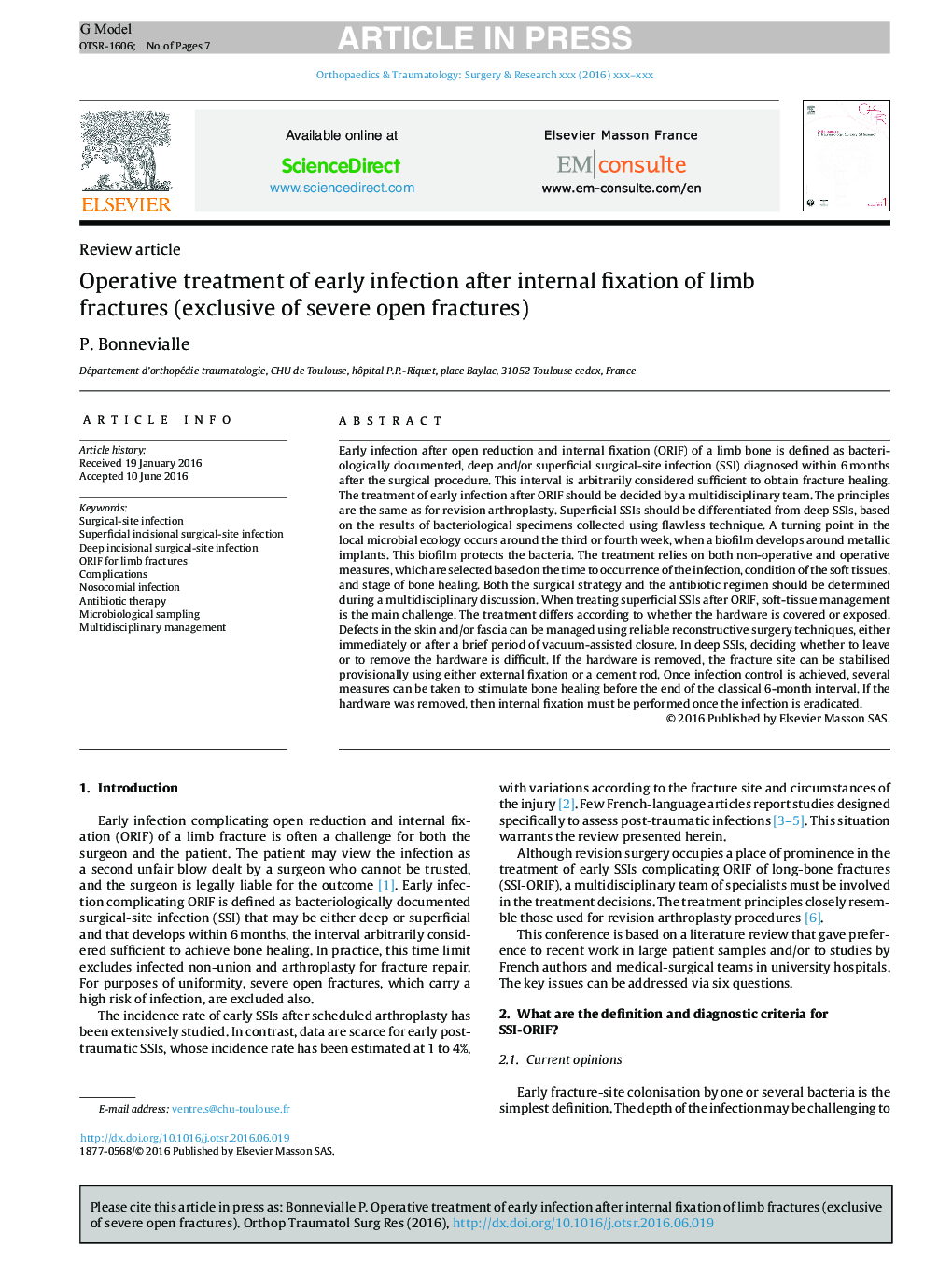| کد مقاله | کد نشریه | سال انتشار | مقاله انگلیسی | نسخه تمام متن |
|---|---|---|---|---|
| 5711185 | 1410921 | 2017 | 7 صفحه PDF | دانلود رایگان |
عنوان انگلیسی مقاله ISI
Operative treatment of early infection after internal fixation of limb fractures (exclusive of severe open fractures)
ترجمه فارسی عنوان
درمان عملی عفونت زودهنگام پس از ترمیم داخلی شکستگی اندام (بدون شکستگی شدید باز)
دانلود مقاله + سفارش ترجمه
دانلود مقاله ISI انگلیسی
رایگان برای ایرانیان
کلمات کلیدی
موضوعات مرتبط
علوم پزشکی و سلامت
پزشکی و دندانپزشکی
ارتوپدی، پزشکی ورزشی و توانبخشی
چکیده انگلیسی
Early infection after open reduction and internal fixation (ORIF) of a limb bone is defined as bacteriologically documented, deep and/or superficial surgical-site infection (SSI) diagnosed within 6Â months after the surgical procedure. This interval is arbitrarily considered sufficient to obtain fracture healing. The treatment of early infection after ORIF should be decided by a multidisciplinary team. The principles are the same as for revision arthroplasty. Superficial SSIs should be differentiated from deep SSIs, based on the results of bacteriological specimens collected using flawless technique. A turning point in the local microbial ecology occurs around the third or fourth week, when a biofilm develops around metallic implants. This biofilm protects the bacteria. The treatment relies on both non-operative and operative measures, which are selected based on the time to occurrence of the infection, condition of the soft tissues, and stage of bone healing. Both the surgical strategy and the antibiotic regimen should be determined during a multidisciplinary discussion. When treating superficial SSIs after ORIF, soft-tissue management is the main challenge. The treatment differs according to whether the hardware is covered or exposed. Defects in the skin and/or fascia can be managed using reliable reconstructive surgery techniques, either immediately or after a brief period of vacuum-assisted closure. In deep SSIs, deciding whether to leave or to remove the hardware is difficult. If the hardware is removed, the fracture site can be stabilised provisionally using either external fixation or a cement rod. Once infection control is achieved, several measures can be taken to stimulate bone healing before the end of the classical 6-month interval. If the hardware was removed, then internal fixation must be performed once the infection is eradicated.
ناشر
Database: Elsevier - ScienceDirect (ساینس دایرکت)
Journal: Orthopaedics & Traumatology: Surgery & Research - Volume 103, Issue 1, Supplement, February 2017, Pages S67-S73
Journal: Orthopaedics & Traumatology: Surgery & Research - Volume 103, Issue 1, Supplement, February 2017, Pages S67-S73
نویسندگان
P. Bonnevialle,
